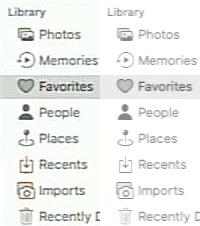
For most of last year, it was nearly impossible to get a name brand video capture card for a computer. These devices help to take video from a camera, video game console or other device and make it usable on your computer to record or stream. In a world that was dependent on streaming, well known cards like Elgato’s were selling for several times over their original price, giving room for a whole range of generic cards. Some of them are pretty good, so let’s consider one of them.
I was excited to see what this model could do when Esywen sent it out way for a look, because it has pretty much everything you might want in a higher end card. I personally use a MavisLink video capture dongle (presently selling for around $20) which I stumbled upon in the rush to find a non-sold-out card last year. It was cheap and, a year in, it works well.
However, that otherwise really nice card has a few features were missing from it I wanted. In particular, I wanted USB-C to use with more recent computers and HDMI pass through so I could display the video signal on a monitor or do a back up recording. I also appreciated that the Esywen is one of the rare low-end options that isn’t in a dongle form factor like a USB flash drive; while that form factor is convenient, it can also put a lot of stress on a laptop’s USB port, risking expensive damage; the Esywen capture card is an actual video capture box similar to higher end options.
It works like you’d expect a capture card to work. It appears like a USB web cam and microphone, making it a snap to use on any computer just as you would a typical web cam. No muss, no fuss. It works on OBS, direct Facebook Live or even a video conferencing app — nice if you’d like to take a better camera, such as a DSLR, and use it for your web cam.
Color accuracy is vibrant and true to whatever the source I fed it was. Latency was excellent — when I recorded my screen using it, I could move my mouse cursor just as I would if the computer were directly hooked up to my screen — no notable delay. The HDMI out is really handy if you want whatever you are recording to also be visible on a screen or, as in my case, you’d like to use a back up HDMI recorder in case your streaming software goes berserk.
The unit itself is attractive and fits nicely with my space gray Apple gear. So far, so good.
I do wish the audio out jack on the side was an audio input jack rather instead. That’d be more useful for live streaming, where one may want to hook up an external microphone rather than depending on the video source one is capturing to provide audio. I use a USB sound board to accomplish this, but an integrated input could be helpful. If you want to monitor the audio coming off of the HDMI input, though, it has that.
I wish I could stop there, but there is one significant con that keeps me from recommending this bargain of a video capture card. While it actually looks better to my eyes on color accuracy, it introduces significantly more artifacts from video compression than my trusty MavisLink, as you can see in these sample captures, below. Just in case you are wondering, artifacts do NOT show up on the HDMI pass through output — it genuinely seems to pass through the video signal without alteration.

|

| While saturation is better in this card (left), artifacting is quite a bit more noticeable, too. | The compression noise is also color noise, not monotone, so in some places lines that were really grayscale appeared colorful instead. |
Is this a showstopper? It really depends on how you use it. Much as JPEGs are great on photos but lousy on text, I think how this does with photographic or video content (such as a live stream from a video camera) means it has an upside I can’t dismiss. However, if you plan to capture anything less forgiving to artifacting (slides from a computer, a game with textual information on screen, etc.), I would think the MavisLink would be better with just a bit of loss in color saturation that can be adjusted for.
As the market continues to flood with cards, this one, which I picked up for $99 has plummeted to a street price of $15, while the MavisLink I use regularly is selling for about $20. At those current prices, I have a hard time being too picky with either card, but I would lean towards the MavisLink and its better handling of video compression. Neither is perfect, but that one is closer and the price difference just isn’t a big deal.
That said, it is almost unbelievable this card can offer the features it does for such a low price, so if you understand its weaknesses and they aren’t a problem for you, it is a pretty good deal (Esywen, $15 on Amazon). 

Timothy R. Butler is Editor-in-Chief of Open for Business. He also serves as a pastor at Little Hills Church and FaithTree Christian Fellowship.
You need to be logged in if you wish to comment on this article. Sign in or sign up here.
Start the Conversation